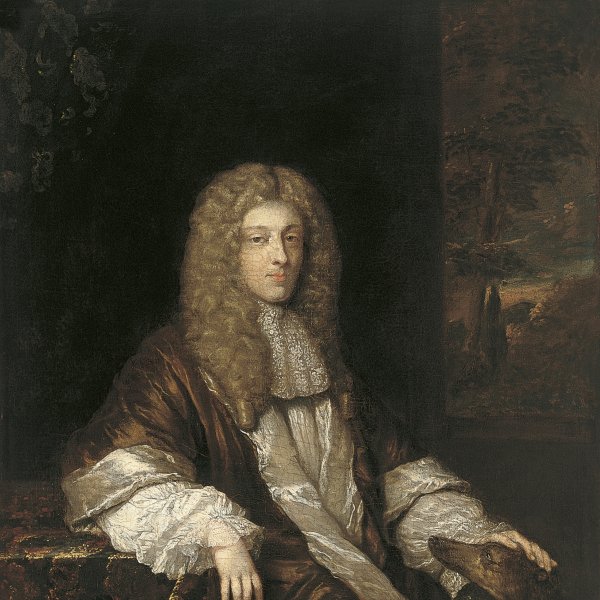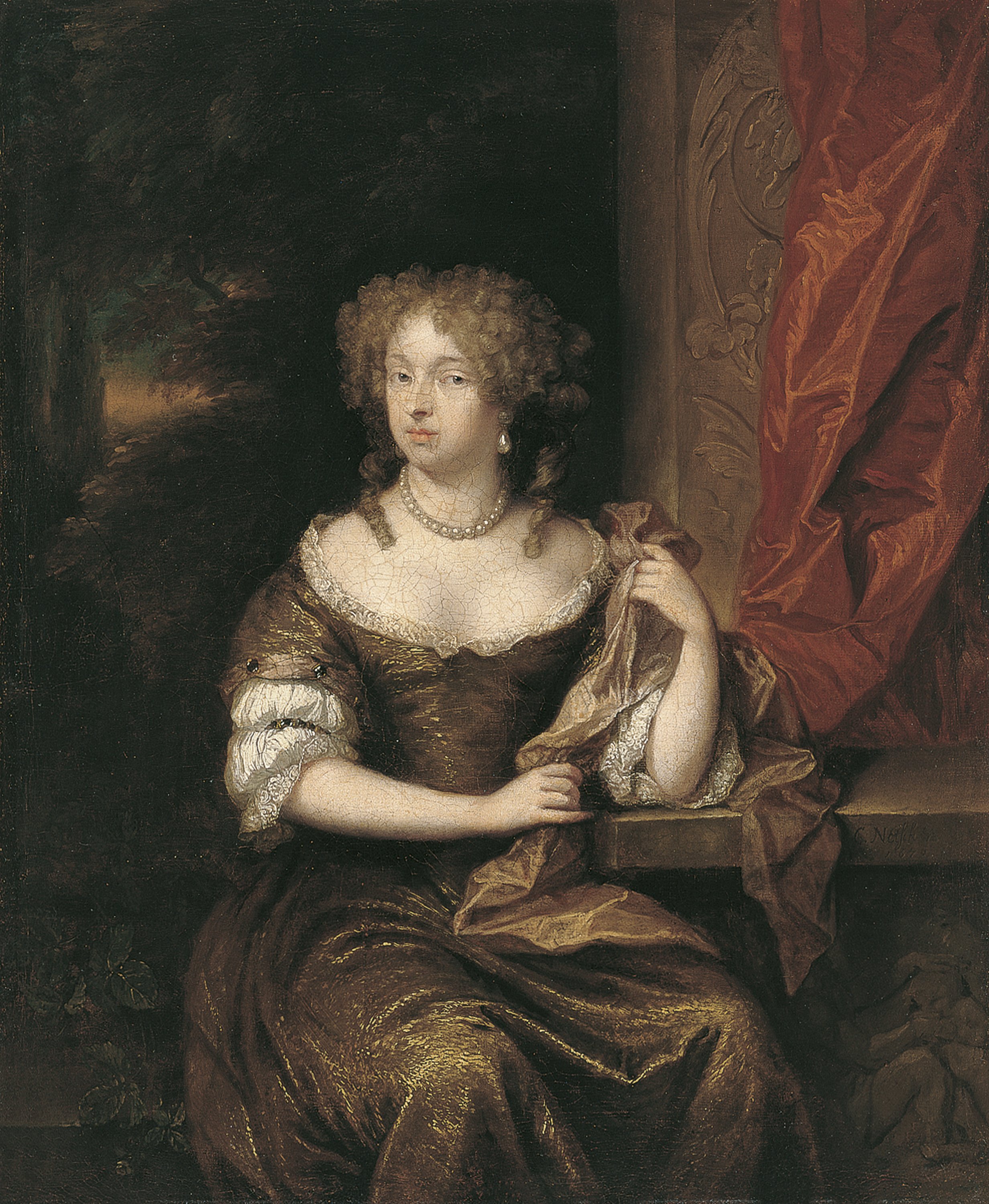Portrait of a Lady
1676
Oil on canvas.
54.2 x 44.7 cm
Museo Nacional Thyssen-Bornemisza, Madrid
Inv. no.
302
(1930.80
)
Room 27
Level 2
Permanent Collection
Following his marriage in Bordeaux in 1659, Caspar Netscher moved with his family to The Hague where he achieved notable success as a portraitist. Netscher, whose teachers included Gerard ter Borch, produced paintings of interiors and portraits, and a pair of figures in Utrecht is among his earliest known works in the latter genre. Like Ter Borch, Netscher preferred small formats for his compositions, into which he introduced lighter and more brilliant colours from the 1660s. From the late 1660s the artist focused more actively on portraiture, creating a format in which the figures, generally presented half-length, are set against backgrounds with gardens or landscapes illuminated with the evening light. His elegant figures, fine technique and the quality of his work made Netscher the most popular painter in The Hague.
These two canvases have the same provenance. Both were in the Coray-Stoop collection in Erlenbach-Zurich where they are recorded in 1923, and were auctioned with other works from that collection in Lucerne in 1925. They were then with the Frankfurt dealer L. M. Hackenbroch, in whose gallery they were exhibited in 1928, and were acquired from that gallery for the Thyssen-Bornemisza collection prior to the Munich exhibition in 1930, in which they were included. The purchase was approved by Hofstede de Groot, whose brief report only focused on the female portrait.
The paintings have been included in the Collection’s catalogues as a pair and both have been considered autograph works by Netscher. However, only the canvas of the woman is signed and dated, for which reason the portrait of the man was the subject of an in-depth study whose results did not reveal any traces of a date or signature. This fact, combined with the poor condition of the painting, particularly the man’s head, led Gaskell to doubt the attribution. As he noted, the large number of commissions that Netscher received encouraged him to rely on studio assistants who included his three sons, of which the best documented is Constantijn.
Both figures conform to the type of presentation that made Netscher such a fashionable portraitist. Particularly notable are the settings and backgrounds that he used in his portraits, which involve sumptuous curtains and hangings or which, as here, take the form of landscapes. The gestures, the richness of the clothes and the woman’s jewels suggest that these sitters belonged to the wealthy, fashionably dressed classes, indicated by the man’s long wig and the French details of his dress. In his monograph on Netscher, Wieseman included these two canvases as workshop productions.
Mar Borobia
These two canvases have the same provenance. Both were in the Coray-Stoop collection in Erlenbach-Zurich where they are recorded in 1923, and were auctioned with other works from that collection in Lucerne in 1925. They were then with the Frankfurt dealer L. M. Hackenbroch, in whose gallery they were exhibited in 1928, and were acquired from that gallery for the Thyssen-Bornemisza collection prior to the Munich exhibition in 1930, in which they were included. The purchase was approved by Hofstede de Groot, whose brief report only focused on the female portrait.
The paintings have been included in the Collection’s catalogues as a pair and both have been considered autograph works by Netscher. However, only the canvas of the woman is signed and dated, for which reason the portrait of the man was the subject of an in-depth study whose results did not reveal any traces of a date or signature. This fact, combined with the poor condition of the painting, particularly the man’s head, led Gaskell to doubt the attribution. As he noted, the large number of commissions that Netscher received encouraged him to rely on studio assistants who included his three sons, of which the best documented is Constantijn.
Both figures conform to the type of presentation that made Netscher such a fashionable portraitist. Particularly notable are the settings and backgrounds that he used in his portraits, which involve sumptuous curtains and hangings or which, as here, take the form of landscapes. The gestures, the richness of the clothes and the woman’s jewels suggest that these sitters belonged to the wealthy, fashionably dressed classes, indicated by the man’s long wig and the French details of his dress. In his monograph on Netscher, Wieseman included these two canvases as workshop productions.
Mar Borobia






